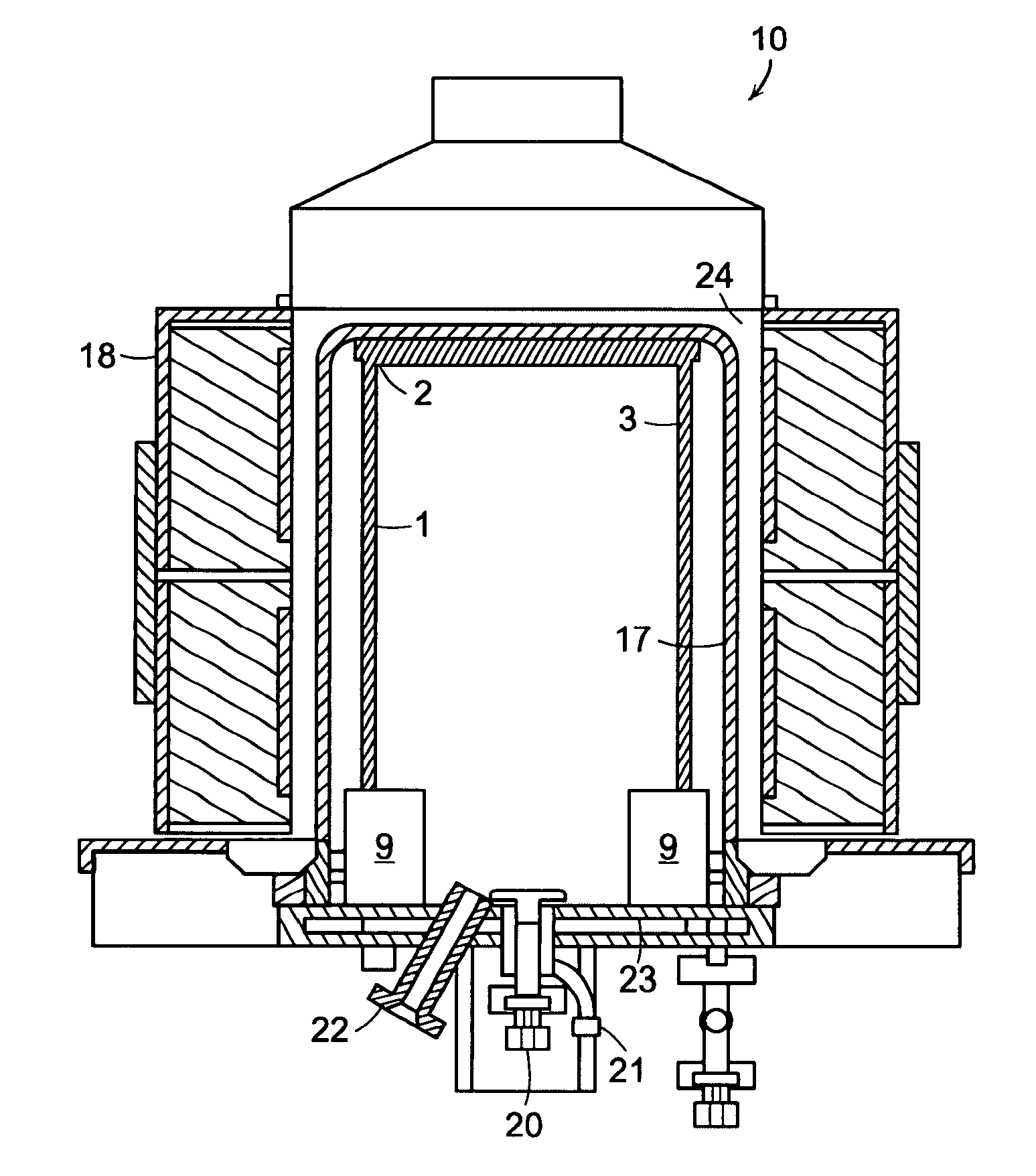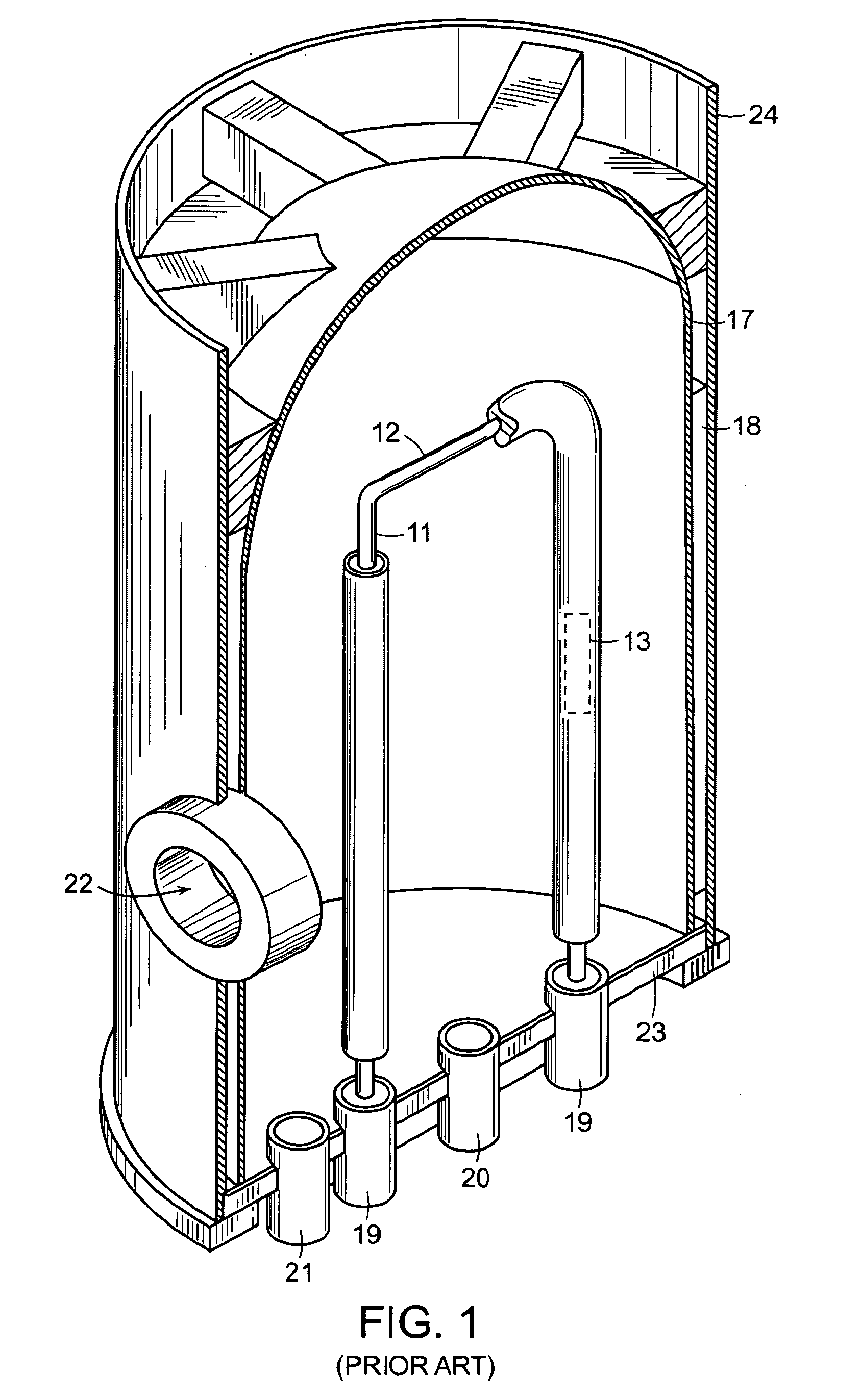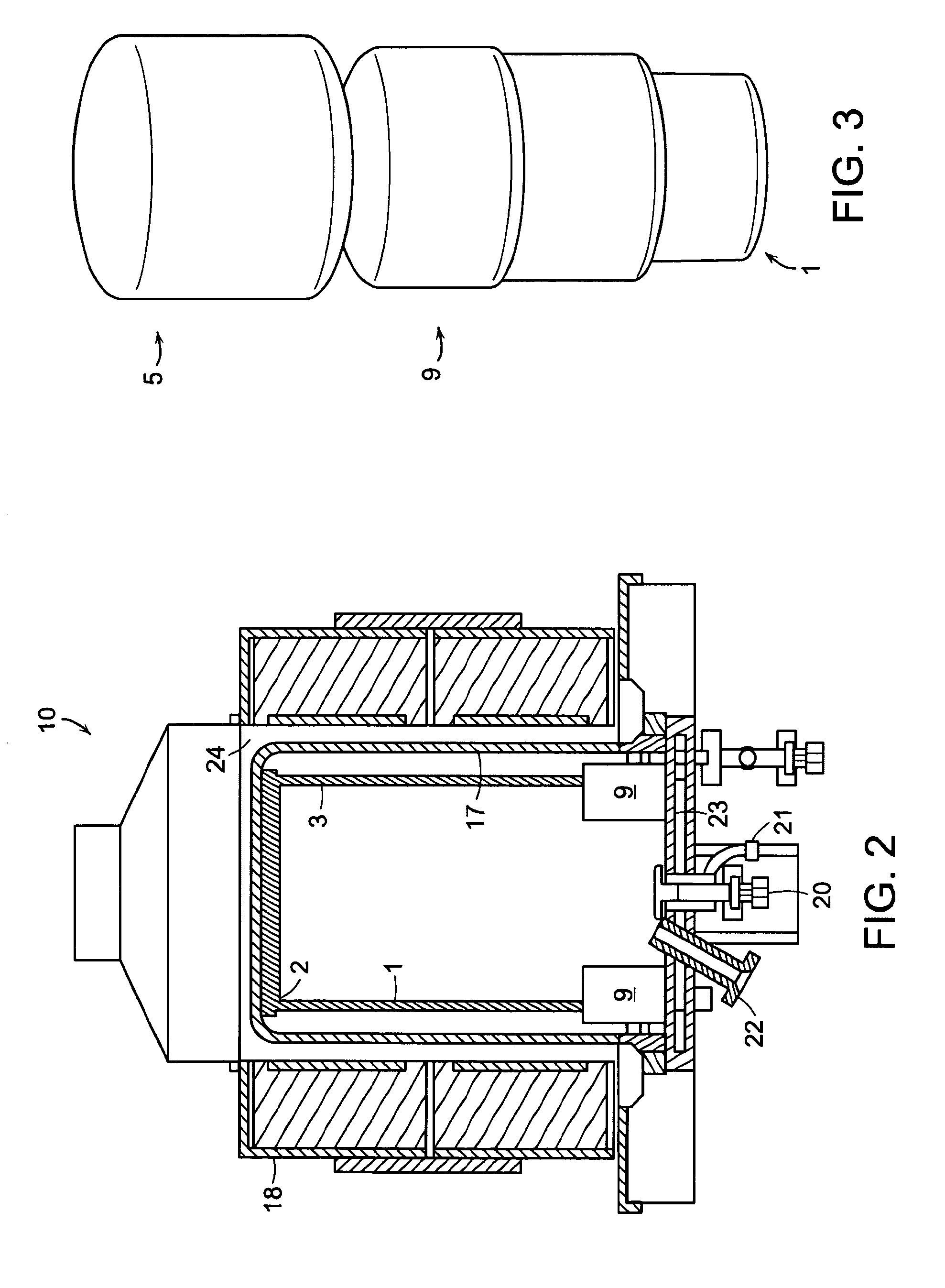Chuck and bridge connection points for tube filaments in a chemical vapor deposition reactor
- Summary
- Abstract
- Description
- Claims
- Application Information
AI Technical Summary
Benefits of technology
Problems solved by technology
Method used
Image
Examples
Embodiment Construction
[0034]Preferred embodiments of the subject invention are described below with reference to the accompanying drawings, in which like reference numerals represent the same or similar elements.
[0035]While the description herein refers to the production of polysilicon, the techniques, devices and methods described herein are not limited to the production of polysilicon only and are useful for any material for which a CVD reactor and tube filaments are utilized. These materials may be, for example, carbon fiber, carbon nanofibers, silicon dioxide, silicon-germanium, tungsten, silicon carbide, silicon nitride, silicon oxynitride, titanium nitride, and various high-k dielectrics.
[0036]FIG. 2 is a cross-sectional view of a CVD reactor system 10 capable of being used with the subject invention. FIG. 2 as provided herein corresponds to FIG. 2 of U.S. Pat. No. 6,284,312, which is incorporated by reference herein. While the CVD reactor system 10 utilized by the subject invention is similar to t...
PUM
| Property | Measurement | Unit |
|---|---|---|
| Length | aaaaa | aaaaa |
| Circumference | aaaaa | aaaaa |
| Electrical current | aaaaa | aaaaa |
Abstract
Description
Claims
Application Information
 Login to View More
Login to View More - R&D
- Intellectual Property
- Life Sciences
- Materials
- Tech Scout
- Unparalleled Data Quality
- Higher Quality Content
- 60% Fewer Hallucinations
Browse by: Latest US Patents, China's latest patents, Technical Efficacy Thesaurus, Application Domain, Technology Topic, Popular Technical Reports.
© 2025 PatSnap. All rights reserved.Legal|Privacy policy|Modern Slavery Act Transparency Statement|Sitemap|About US| Contact US: help@patsnap.com



